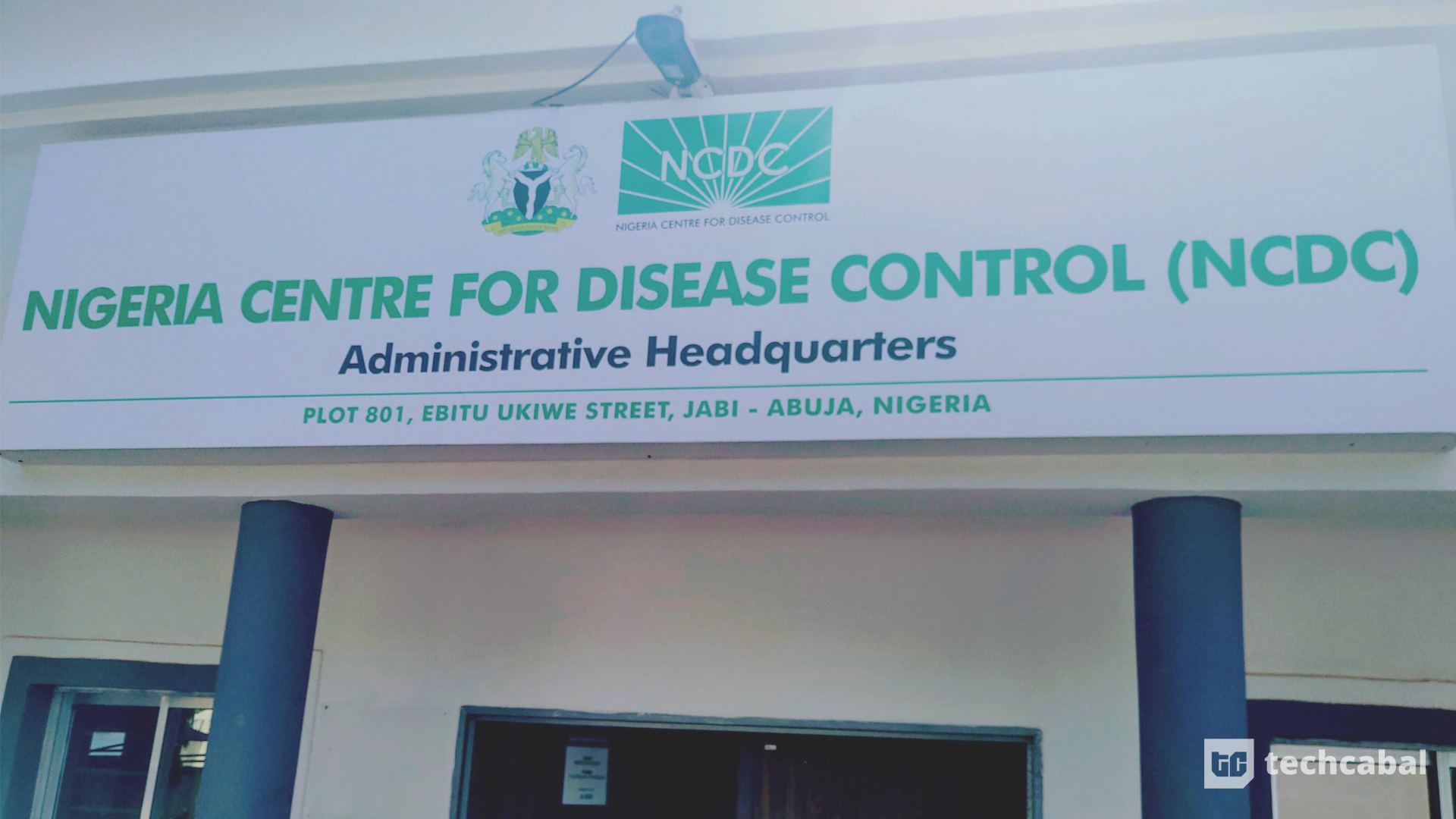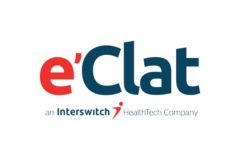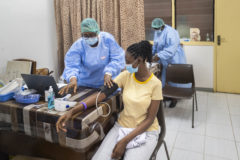In a six-person office on the first floor, staff from the ICT and corporate communications units critique aspects of the coronavirus website that had just gone live.
“The highlights are long, they need to be spaced out if we want people to read them,” a member of the comms team says.
It is a Tuesday morning at the Nigeria Centre for Disease Control (NCDC) headquarters in Abuja. Twenty four hours earlier, Nigeria’s health minister had announced the confirmation of a second coronavirus case.
The new case discovered in Ogun state, 82km north of Lagos, is a contact of the index case announced on February 28. The new patient is “clinically stable” and has been isolated for follow-up care, according to Osagie Ehanire, Nigeria’s health minister.
NCDC’s microsite contains information on case summaries, global situation reports and advisory videos on COVID-19, the novel coronavirus. It is the latest cog in a technology-driven response strategy that has, so far, successfully tracked cases while proactively communicating progress to a still suspicious public.
Based on Basics
Nothing happening here is extraordinary. Coronavirus has not radically changed the organisation’s operational procedure, Uche Iwuozor, a systems analyst and technical lead at the ICT unit, tells me.
“We can’t reinvent the wheel. Coronavirus is just one incidence. What we are doing in terms of response is to fit it into our existing systems.”
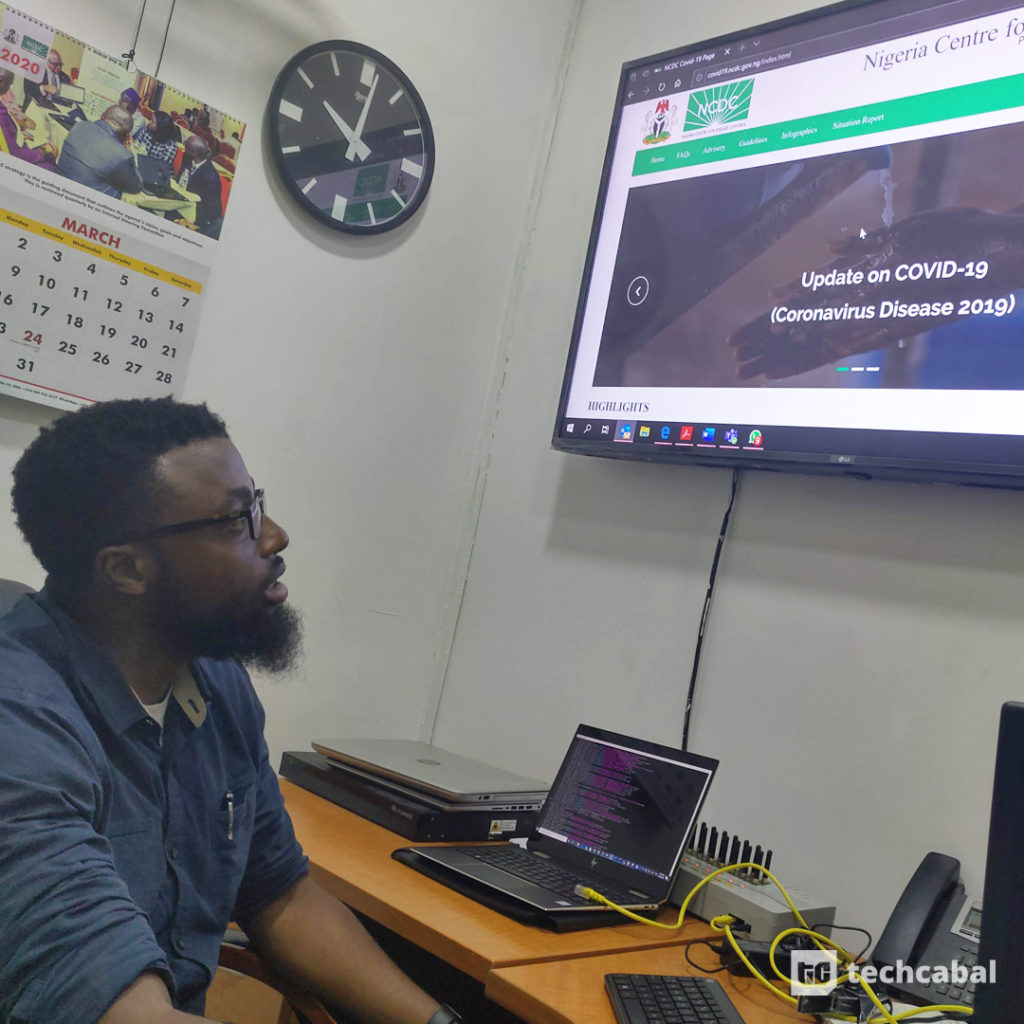
NCDC’s coronavirus response is supported by a combination of basic setups like a 24-hour call centre, software-assisted data collection and logistics management. All of that is geared towards containment, a process of quickly identifying cases and ensuring the most is done to prevent spread.
Contact tracing is at the core of the NCDC’s ability to handle the spread of coronavirus. It is the hinge on which the emergency response depends. At the time of the Ebola virus disease six years ago, tracing was basically a pen and paper process. Information collection and collation was slow, limiting the pace of response.
But a digitized real-time system introduced in 2017 has improved the NCDC’s capacity to make better decisions for containing the coronavirus.
Real-time coronavirus reporting
Central to the NCDC’s event-based surveillance system is SORMAS (Surveillance Outbreak Response Management and Analysis System), an open source ehealth system. Everything about the commission’s data collection and collation across Nigeria is done via the online platform.
At the NCDC’s Incident Coordination Centre (ICC), a SORMAS dashboard displays disease information in real-time. There are case facts for Lassa fever, measles, yellow fever, meningitis, and coronavirus, among others.

The current contact tracing process depends on a network of field and office surveillance personnel working in sync via mobile gadgets powered by the SORMAS architecture. In all 774 local government areas, field officers collect relevant data from persons of interest and the data reflects at the ICC’s SORMAS screen in Abuja.
Disease notification officers at every state provide quality control checks and balances between data collectors at local governments and federal overseers at NCDC’s headquarters. Data from this chain feeds planning and strategy sessions at meetings of the emergency operations committee.
Digital communications and a Facebook partnership
NCDC has not created any bespoke technology for the COVID-19 response. They are leveraging already-built systems to reach out to the public and receive feedback that informs decision-making.
A 24-hour toll-free call centre is operated by six people at any given time to take questions and provide answers to public enquiries on the virus from all 36 states in Nigeria.
Call agents are tasked with responding to diverse questions relevant to coronavirus. But they have, predictably, also gotten curious enquiries: at least one person has called to ask for the current price of a bag of rice. Another has called to solicit school fees assistance.
NCDC has leaned heavily on social media as a complement to regular television and radio appearances. Social media is a usual source of disinformation in crisis.
But the NCDC has been deliberate about driving the coronavirus narrative by pushing out as much information as necessary on Twitter, Facebook and via WhatsApp.
Twitter’s verification of both the NCDC account and that of the DIrector General, Chikwe Ihekweazu, adds credence to updates from the organisation.
They have also received direct support from Facebook; when you search for COVID-19 on Facebook, the newly launched microsite comes up as a top result on your news feed and as an ad. It is an effort by the social media company to curb fake news on the virus, an NCDC comms staff who requested anonymity said.
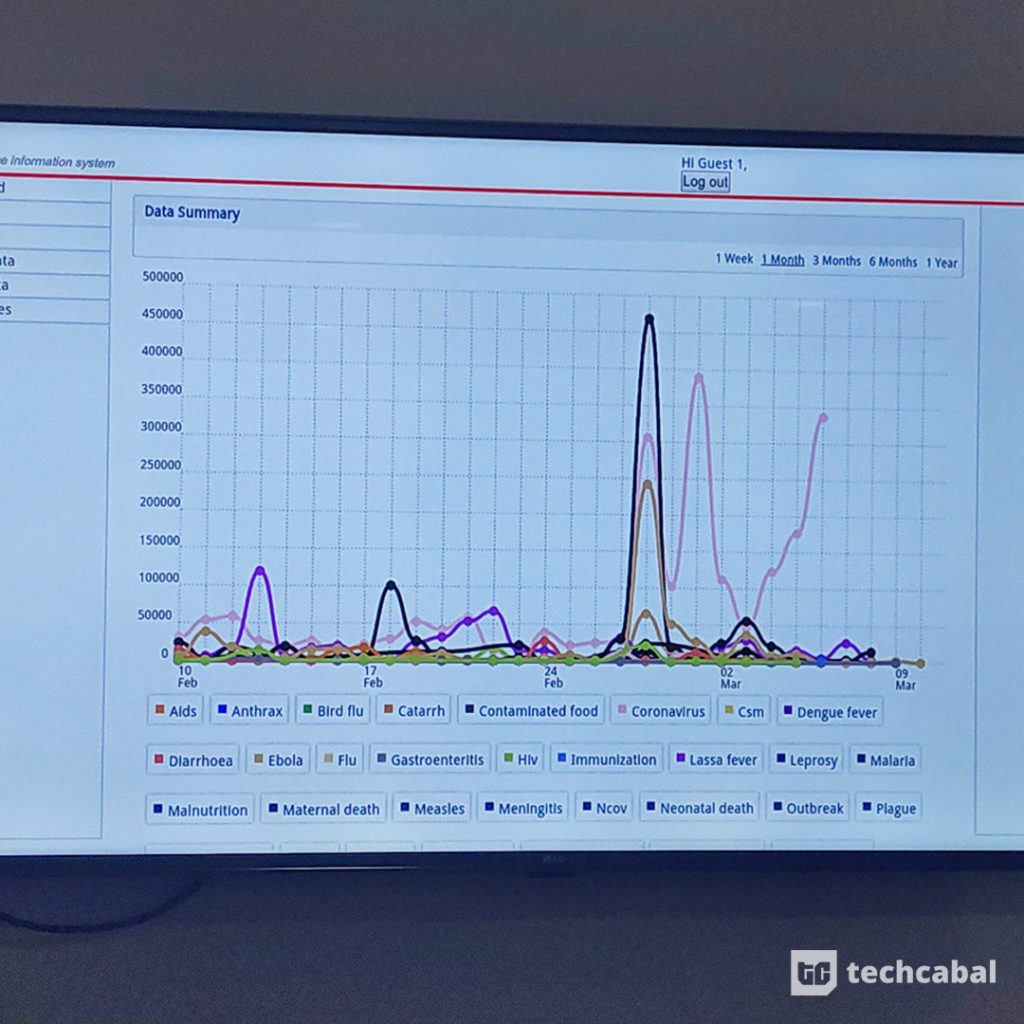
To gauge the pulse of public conversation around coronavirus, the commission’s ‘Tatafo’ platform mines data from social media and other web sources using keywords.
Trends data reveal the level of public concern and point to the most discussed topics in public forums. In addition to the call centre, Tatafo is the digital feedback platform that influences NCDC’s messaging, helping them channel intervention.
Preparing for worse
Nigeria’s coronavirus information website and the overall tech set-up would not be the subject of a sci-fi movie. The microsite is basic; it does not have the level of interactivity or volume of data you see on those of Singapore, Hong Kong or the United States.
However, each of those countries have far more coronavirus cases than Nigeria.
Singapore’s coronavirus website provides an incredible volume of detail on the location of every confirmed case in the country. The US has 37 deaths as at press time, with about 8,000 tests done daily across its 50 states plus the District of Columbia. Italy’s 60 million people have been told to stay at home to enable the government get some grip on the outbreak there.
There’s a dire need in those countries to collect and display tons of information to guide the public’s travel decisions.
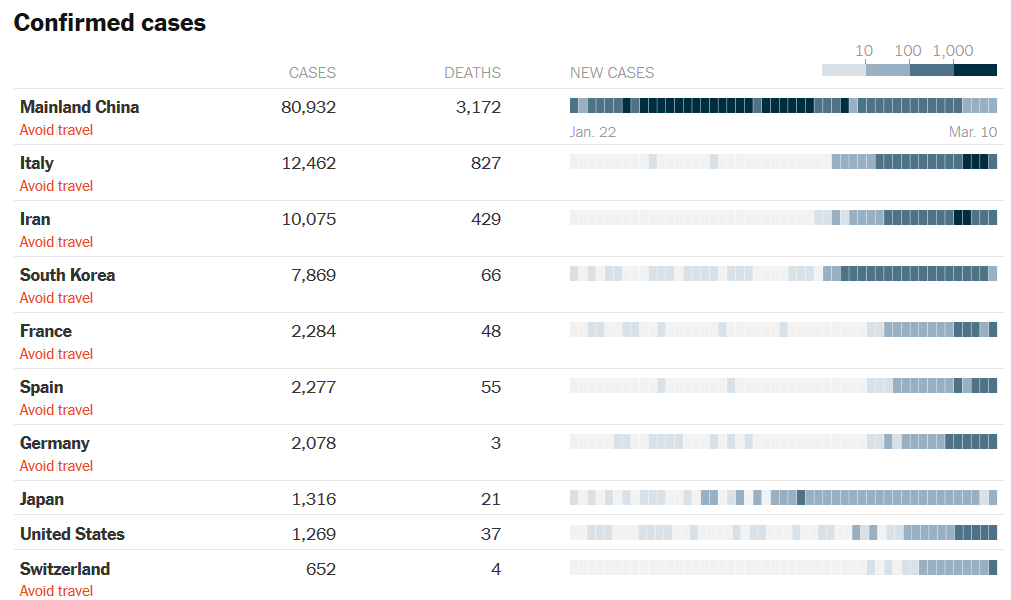
That doesn’t mean Nigeria could not need a more sophisticated information display system. In the event of a sporadic outbreak, it would be crucial to inform the public on absolute no-go areas and routes to best avoid.
A GPS-enabled website is being constructed, according to Iwuozor. His team has three in-house developers working on solutions that will keep NCDC vigilant for possible sudden occurrences.
For now, the commission continues training at ports of entry for surveillance personnel on the use of SORMAS for case management and contact tracing.
Editors note: Alex Onukwue reported from Nigeria’s Centre for Disease Control (NCDC) in Abuja.







